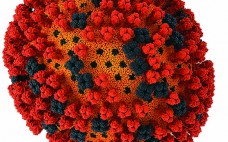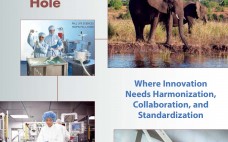Managing vaccine supply chain improvements involves a complex interaction of laboratories, other facilities, CMOs, and suppliers. Since the business of making vaccines became a commercial proposition, profitability has often been elusive. The economics are difficult: Costs of development and production, already high, are rising. Profit margins historically have been lower than those of other pharmaceutical products, in part because of the complexities of manufacturing and distributing vaccines as well as their stringent safety, testing, and quality requirements.
2015
Affinity Capture of F(ab’)2 Fragments: Using Twin-Column Countercurrent Chromatography
Antibody fragments are potent active drug substances (1–4). Because they lack glycosylation, they can be produced using different biological expression systems, including yeast and microbial systems as well as mammalian cells. These molecules are interesting as biopharmaceuticals because they are smaller than full-size antibodies and therefore may penetrate better into different tissues. Antibody fragments are cleared faster in biological systems because they lack the Fc antibody structural region (4). However, fragments may be conjugated to increase their size for improved…
Simulating Seal Life with Finite-Element Analysis
Finite-element modeling is an attractive alternative to physical testing for predicting seal life, particularly when aging poses major concerns and seal replacement is expensive. For years, seal manufacturers and users alike have searched for a reliable method for predicting how long seals will last in service. Past methods for evaluating an elastomer’s potential as a static or dynamic seal use American Society for Testing and Materials (ASTM) or other standard immersion tests. These tests involve submerging a material in a…
Evaluating Adsorptive Filtration As a Unit Operation for Virus Removal
To date, the majority of recombinant monoclonal antibodies (MAbs) have been produced by mammalian cells. During such production processes, the potential risk of entrained viruses must be critically considered (1). Contamination can arise from animal cell lines or from adventitious viruses introduced during manufacturing. To ensure the viral safety of biotechnology products, companies can take four complementary approaches (2, 3): Using animal-component–free raw materials wherever possible Virus testing of master cell banks Virus testing of unprocessed harvest Performing downscale virus…
Protein A Intermediate Wash Strategies
Protein A affinity chromatography offers efficient monoclonal antibody (MAb) purification and is used extensively in large-scale MAb production. As is the case with most chromatography media, protein A resins often have some degree of nonspecific binding, which causes host-cell proteins (HCPs) to coelute with a MAb. To reduce nonspecific binding interactions, an intermediate wash step can be performed before product elution. Doing so can improve product purity, extend column lifetime, and potentially eliminate a subsequent polishing step. For large- scale…
Cancer Innovation Forum Calls for Improving US Research “Ecosystem”
Accelerating the commercialization of promising new cancer treatments relies on ensuring that patients — individually and collectively — are actively involved throughout research and drug development. This was the consensus of leading scientists, advocates, and government officials meeting in Washington, DC, at the first national policy forum convened by the Cancer Innovation Coalition (CIC). A collaboration of cancer stakeholder organizations and others working through a national campaign called Project Innovation — which is spearheaded by National Patient Advocate Foundation (NPAF)…
From the Editor and Spotlight
From the Editor Many publishers are grappling with managing and predicting the course of print and digital publishing. For academic journals with relatively few paid subscribers and/or association members focusing on specialty subject matter, going digital may make good sense — especially if that can lower subscription costs. However, BPI is a hybrid of reviewed journal and trade publication, addressing many reading and advertising preferences. The choice of which content to offer in print and which to duplicate or offer…
Fundamental Strategies for Viral Clearance – Part 1: Exploring the Regulatory Implications
Over the past several decades, biologics such as monoclonal antibodies (MAbs) and recombinant proteins have provided therapeutic benefits and efficacy for the treatment of human disease. Completion of the human genome project (launched in 1990) produced a draft of the genome in 2001. A full sequence was published on the 50th anniversary (2003) of the initial publication of Watson and Crick’s papers on the double-helical structure of DNA (1). That large volume of genetic information has been translated into usable…
Advances in Chromatography Automation
Not long ago, chromatography automation meant strip recorders and peristaltic pumps. Today, few people would consider that to be true automation, and even fewer would settle for binders full of strip-recorder paper reels. Automation is becoming intelligent and in the process is making our workflows smarter. But how close is automation to being as smart as an experienced scientist? Bio-Rad Laboratories spoke with academics, biotechnology R&D scientists, and industrial process engineers about the evolution of chromatography automation — where it…
The Single-Use Watering Hole: Where Innovation Needs Harmonization, Collaboration, and Standardization
Within the past few years, the single-use technology (SUT) arena of the biopharmaceutical industry has exploded in growth. Leading organizations have predictably and understandably stampeded to the “watering hole” of single-use to drink up the advantages that disposable components offer over traditional multiuse parts and technologies. The initial value and risk-reduction results are being realized — but not without the emergence of other trade-offs. End users continue to call for standardization in emerging areas of the industry while also recognizing…









